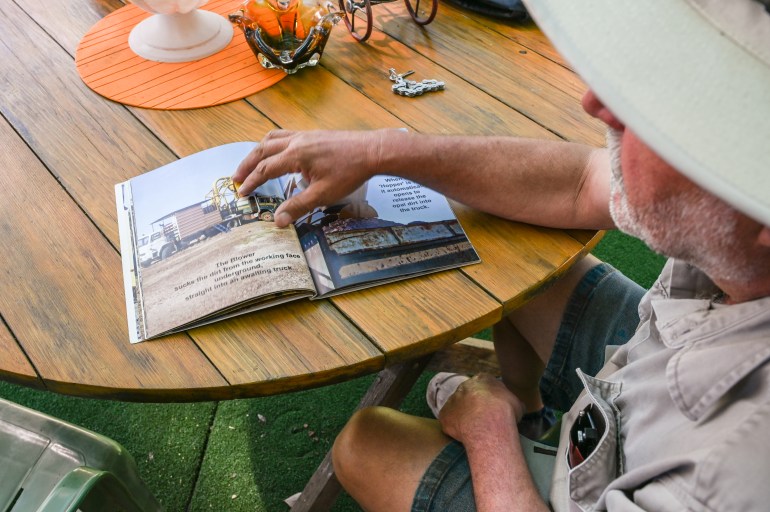'You’ll get it in your veins'
The black-opal hunters of outback Australia
Listen to this story:
Sebastian Deisenberger leaned over the table in his garden, at his home on the edge of the Australian outback, his eyes glistening. He was explaining his obsession with rare black opals and why he uprooted his life in Germany to mine them.
Finding opals is “one of the best feelings you can get,” he said. “It took a hundred million years to form and come to that stage and then you’re the first one who sees that."
Deisenberger is one of a few hundred full-time miners in Lightning Ridge, Australia, home to the black opal, one of the most sought-after gemstones in the world. They are only found in two places: this remote corner of the world and Ethiopia. And they can fetch a lot of money.
The most valuable one ever found, the Aurora Australis discovered in 1938, is worth about $1m today. But even less famous black opals have a spell-binding allure. Some stones contain just a few of the gem's potential colours - peacock blue, soft, feathery white, shards of green or deep blood-red. Others ripple with all the hues of the rainbow, and all against a jet-black base.

The opals formed in sandstone and mudstones anywhere between 145 and 35 million years ago. Weathering of these sedimentary rocks released silica into groundwater which then flowed into cracks and crevasses. The mixture then slowly hardened, forming the gemstones.
It’s impossible to know how much a black opal will fetch until it’s cut and set. But for miners in Lightning Ridge, the search is just as alluring as the stone itself.
They base themselves 720 kilometres (447 miles) northwest of Sydney in Lightning Ridge, an oasis of tarmac and weatherboard houses bordering the desert in New South Wales. The town is home to 2,284 official residents. But because people migrate to and from the Ridge with the seasons – many coming to mine in the cooler months and leaving when the weather gets too hot – the actual population can number far higher.
People come from all over the world to mine in the Ridge. The lifestyle is addictive, miners say. The hunt is intoxicating. The stone itself, enchanting.
